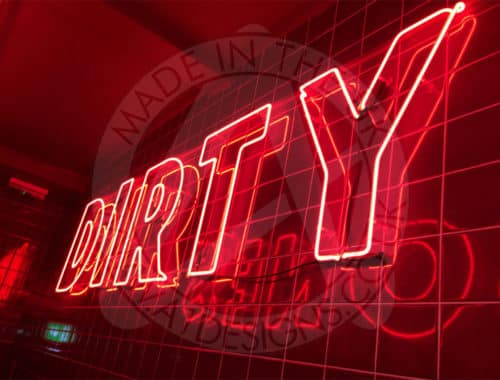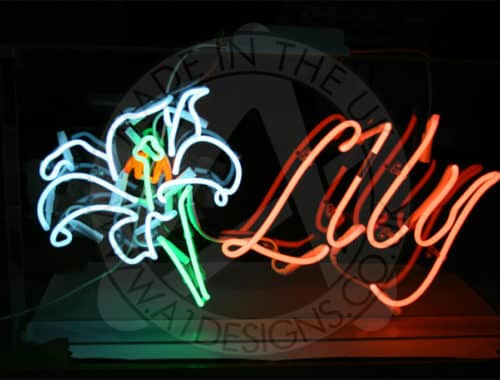Discover the History of Neon Signs
Want to find out about the history of neon signs and lights? Read how its use has evolved over the years from a thing of amazement, to an everyday way to create one of the most impactful styles of signage.
Discover the History of Neon Signs
Neon has been around for many years and is an evolution of the earlier Geissler tube which were popular during the late 1800’s. These were not suitable for lighting as the pressure of the gasses within, decreased with use. Then came the Moore tube, this tube used nitrogen or carbon dioxide and a mechanism for maintaining pressure. Moore Tubes were used in the early 1900’s.


A Frenchman by the name of Georges Claude first started producing neon as a by product to their air liquefaction process in 1900. He then demonstrated the first lamps in 1910 at the Paris Motor Show by showing 2 lengths of 12 metre long bright red neon tubes for the first time. The discovery and addition of phosphors to tubes and the use of the inert gas argon has allowed the creation of many different colours. Since the invention of the first discharge lamp, the process of creating a neon sign has improved greatly, creating a life expectancy exceeding 40,000 hours. But Neon has been found still running after 77 years of constant use as shown in this article.
Neon tube production Process.
A neon sign is made using a glass tube, which is then bent to the design or shape required. Electrodes are then welded to each end of the tube. The section of glass is then connected to a machine that carries out the bombarding process. The bombarding process involves the section being partially evacuated of air; the section is then heated to about 250 Degrees centigrade. As this temperature is being attained, the section is continually vacuumed out, removing impurities from the tube. Once this process is completed the tube is then back filled with either neon or argon gas to a determined pressure. The tubes are then sealed off and removed from the processing machine. Once the tubes have completed the bombarding process they are then aged in – a process that ensures even colour distribution along the length of the tube and the quality of the tube.
The Tubes used in our signs are aged for 24 hours as part of our quality control testing process, to ensure a high quality long life end product.
Watch the brief film summarising the neon process below.
When it comes to bespoke neon signs and lighting, A1deSIGNS is one of the leading choices throughout London and the UK. If you are interested in having any of the following custom designed, please take the time to contact us to speak about the ideas you have: